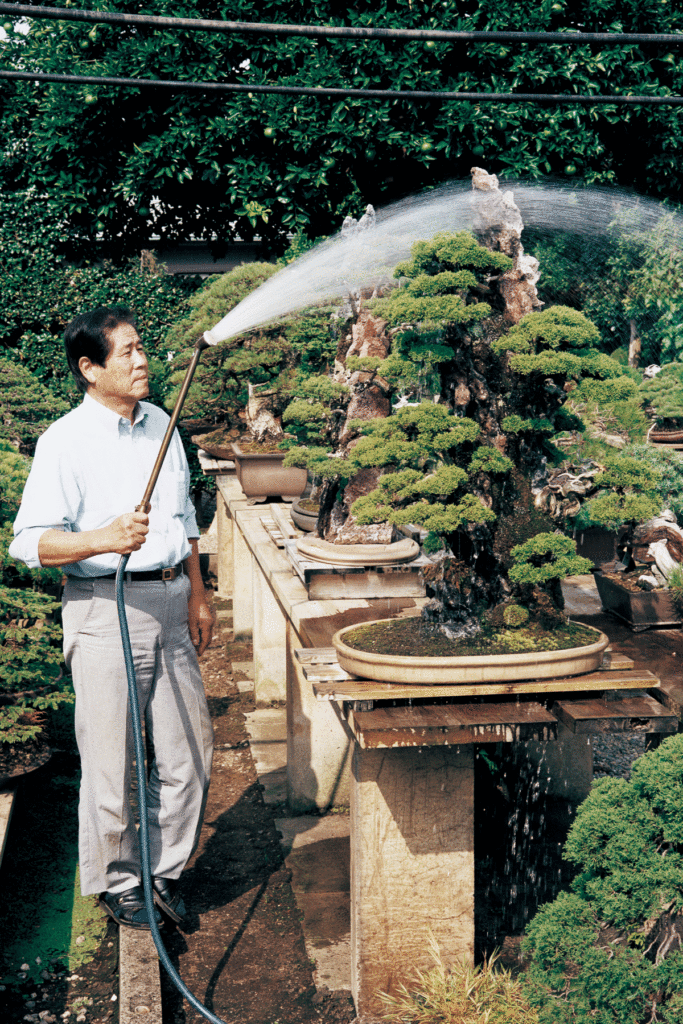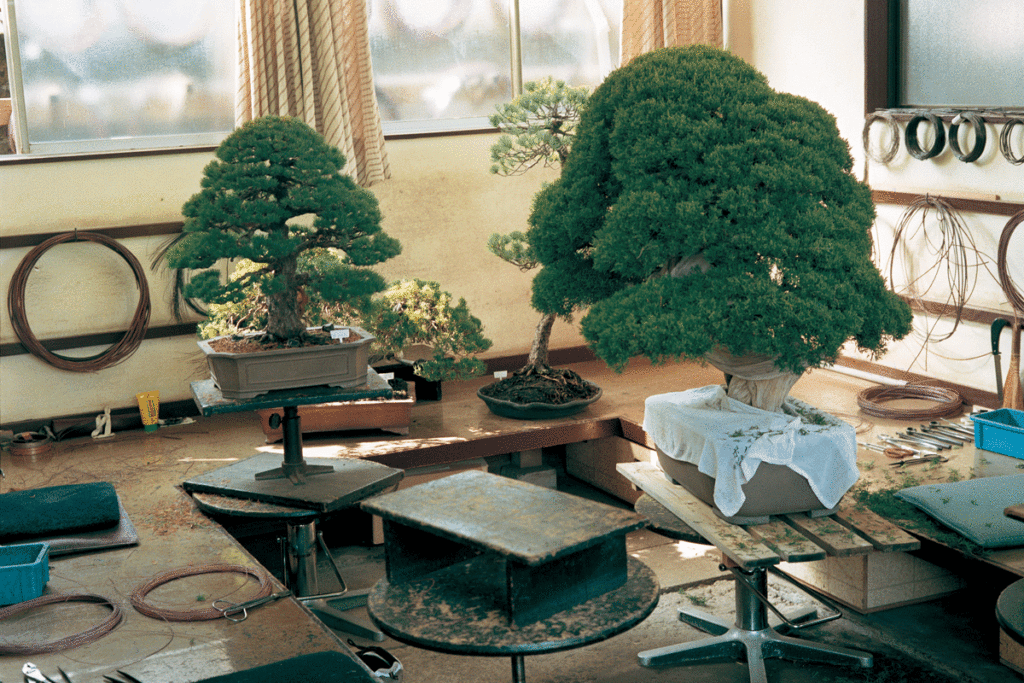Story 03 | Masahiko Kimura: White syrup and green clouds
In the center of Tokyo, behind a moat, a stone wall and guards, there is a 500 year old Bonsai named Sandai-Shogun-No Matsu. Owned by the Imperial Family (and kept in the Imperial Palace) this Bonsai is the oldest in the world to be cultivated and cared for by hand. Tended to by dozens of bonsai masters, including one Shogun, it is the greatest example of bonsai as an artwork created by many collaborators across the centuries. Each new master would have spent years pruning leaves or whole branches with bonsai shears, new growths would have been rubbed off, or pinched back to force them to rebranch and other branches would have been bound with wire using a Yattoko (pliers)using wires. All this was done to shrink a five needled pine tree into a miniature version of its natural self.

Masahiko Kimura, one of the world’s most famous living bonsai masters, chose a different method. He is not exactly a bonsai grower, craftsmen or caretaker, but see’s himself more as an artist. His trees are not formed by many hands across the centuries but envisioned and sculptured by himself using power tools in days or hours.
“If I spent 100 years tending a tree I would be dead and have never made a living. Artists only became revered once they’re dead, I don’t want that path.”
Kimura was born into a family of inventors in Omiya’s Bonsai Village in 1940, but originally his family had little to do with the Bonsai industry. Sadly, in 1951 his father died, overwhelmed by the responsibility of inventing weapons during the war, and this would deeply affect Kimura.
“My mother worked hard to bring us up, but we didn’t have money and I wasn’t able to attend school. She thought bonsai would be a good career for me because I was good with my hands.”
Now, over fifty years later, it is clear that Kimura is good with his hands, but his real talent might be a severe attention to detail. The gardens around his property are immaculate, calling them perfect would not be an overstatement. His bonsai are equally well kept, created with a unique sense of form and highly inventive techniques (most of the tools he uses to work on his bonsai have been built by himself). Overseas however, Kimura’s real fame has come from this last aspect, his inventiveness; what used to take decades for a traditional bonsai master to do takes Kimura a day, or in some cases hours. He shows us a photo album of a tree gathered from the mountains, which he transformed into a spectacularly asymmetrical bonsai in 7 hours and 30 minutes using a range of power-tools and unique wiring techniques. “In order to make something truly new a maker must take a serious risk. Not everyone feels comfortable to take that chance.”
At one time this attitude gave Kimura the reputation of a heretic in the bonsai community but now he is regarded as something of a genius, and is often referred to in names more fitting of Las Vegas performers than traditional artists. “People call me the ‘magical technician,’ but in reality everyday is hard work.
< PAPERSKY no.37(2012) >












